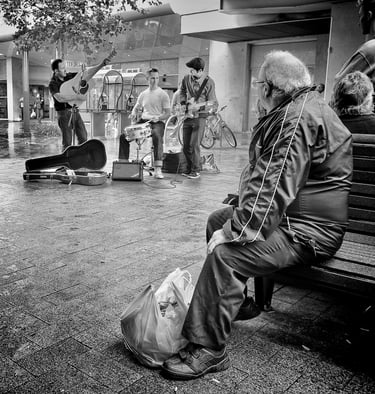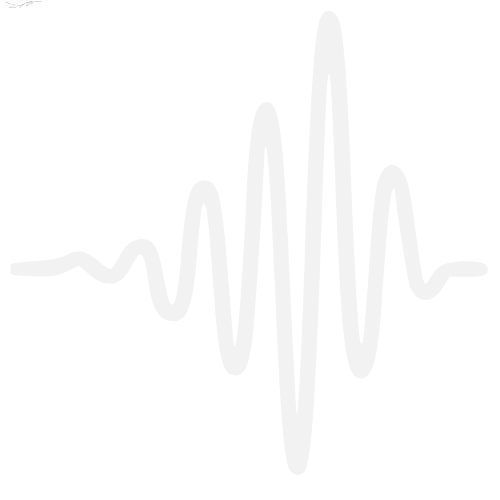Street Photography Gear Guide
It’s Not Just About the Latest and Greatest
PHOTOGRAPHY PERSPECTIVES


When it comes to street photography, the allure of shiny new gear is hard to resist. But let’s set the record straight: capturing those striking, candid moments isn’t about having the priciest camera or the latest lens.
Street Photography Gear Guide: It’s Not Just About the Latest and Greatest
Trust me, you don't need flashy gear to look the part—or what you think is the part—because seasoned street photographers will spot you a mile off and might have a quiet chuckle at your expense. Save your pride; less is definitely more. It’s all about understanding your environment, knowing your equipment inside out, and, most importantly, your ability to see and capture the world in a way that nobody else has. This gear guide is for the serious street photographer who gets that, beyond budget, creativity and comfort are what truly count. Remember, the only people who might be impressed by your loadout of gear are those who don’t know any better.
The Camera: Keep It Simple
A good street camera is like a good friend: reliable, ready for anything, and not too demanding. You want something that feels right in your hand, isn't too heavy, and can be whipped out at a moment’s notice without fuss. Many street photographers prefer a camera that’s discreet—a massive DSLR might get you the shot, but it also gets you a lot of attention, which isn’t always what you want.
Consider light mirrorless cameras or compact cameras with a good sensor. Brands like Fujifilm, Leica, Ricoh and Sony have models that are popular among street photographers for their compact size and less intimidating presence. Older models work brilliantly—remember, a camera a few years old does not suddenly take bad photos just because newer models are out. And if it has a fixed lens, that helps keep things simpler, with the added bonus that you won’t risk those pesky dust bunnies invading your camera sensor.
Lenses: Quality Over Quantity
If you have an interchangeable lens camera, you might think you need a bag full of lenses to be prepared, but that’s not the case. A prime lens with a fixed focal length is often all you need. On a full-frame sensor, a 35mm or 50mm prime lens is ideal for street photography because they closely mimic the natural perspective of the human eye, helping to keep your images as authentic to the scene as possible. If you're using a camera with a smaller sensor, such as an APS-C or Micro Four Thirds, you'll want to opt for a lens with a shorter focal length to achieve a similar field of view—something around 23mm or 35mm typically works well.
These lenses are not only typically faster, offering wider apertures to work with in low light, but they also encourage you to move around and engage with the environment, rather than zooming in from a distance. Plus, they're usually lighter and less conspicuous. And let’s not forget, all that extra moving isn’t just good for your photography—it’s great for racking up those steps, keeping you healthier and fitter!
The Right Bag is No Bag
When it comes to bags for street photography, less is definitely more. Opt for simplicity and ease—often, you only need the lens on your camera, no extras. Skip the flash; a spare battery and memory card will tuck neatly into your pocket, keeping you light on your feet and ready to move freely. After all, who wants to lug around unnecessary weight? It’s not just tiring, but the more you carry, the higher your risk of theft. The ideal setup? No bag at all. Stay nimble, stay alert, and keep your street photography gear as minimal as your approach to the craft.
Accessories: The Essentials
Make sure to pack a spare battery and memory card as essentials; after all, the only thing worse than a missed shot is not being able to take a shot at all. Charge your batteries the night before and check that your cards have more than enough space for the day's shooting. Additionally, always attach a lens hood—it’s useful not just for shading out extraneous sunlight but also for protecting your lens from unexpected bumps. And don’t forget to bring a lens cleaning cloth; not only does it prevent dust from spoiling your shots, but it's also handy for wiping away any accidental splashes of foam from your cappuccino during those well-earned breaks. Being prepared means you’ll never have to miss that perfect shot due to a dead battery, full card, or a frothy, smudged lens.
And while not essential, a compact notebook or a smartphone with a note-taking app can be invaluable for jotting down thoughts or details about the scenes you’ve captured. It’s also handy for recording a subject’s email address if you want to send them a portrait, or noting their name and the specific details of the shot. Keeping such records not only helps in organising your work but also in building connections that could be beneficial for future projects.
Conclusion
Street photography is more about the eye than the gear. The best camera for the job is the one you have on you, the one you know how to use without a second thought, and the one that doesn’t get in the way of your creativity. Keep it simple, focus on the essentials, and let your creativity drive your gear choices, not the other way around.
© Peter Pickering 2024. www.peterpickering.com




